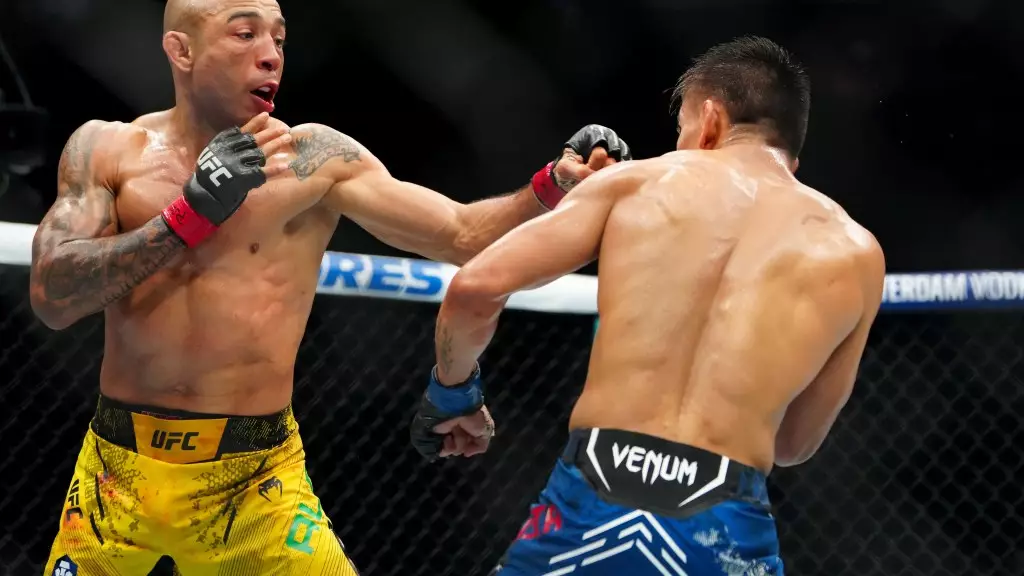Jose Aldo’s recent bout against Mario Bautista at UFC 307 has sparked numerous discussions, particularly surrounding the split decision loss that left many fans and analysts bewildered. Aldo, with a remarkable record of 32-9 in MMA and 14-8 in UFC, faced Bautista, who despite being less experienced, showcased a strategic approach that ultimately paid off. Aldo’s defeat raises essential questions about fight strategy, mental fortitude, and readiness to adapt in high-pressure situations.
Former UFC Bantamweight Champion T.J. Dillashaw’s analysis of Aldo’s fight highlights a crucial component that some critics noticed throughout the match: Aldo’s surprising passivity when pressed against the cage. Dillashaw’s frustration is palpable as he reflects on his expectation that Aldo would utilize his extensive fighting experience to effectively disengage from Bautista’s clinch. The essence of Dillashaw’s criticism lies in the idea that a champion’s prowess goes beyond merely possessing skills; it encompasses the ability to apply these techniques when under duress.
Aldo’s decision to remain stationary while being pushed against the cage undoubtedly created the impression that Bautista was in control of the match. This perception played a crucial role in swaying the judges’ opinions, as they witnessed Bautista’s strategy to dominate without necessarily landing damaging blows. The implications of Aldo’s resistance to engage in evasive maneuvers could be interpreted as a lack of urgency that ultimately cost him the fight.
Aldo’s choice to conserve energy, while arguably strategic, poses significant risks in the fast-paced environment of mixed martial arts. Dillashaw’s commentary touches on this delicate balance; if a fighter becomes too cautious, it can signal weakness to the judges who are tasked with scoring the fight. The judgment of inactivity versus effective control comes into play, and here, Aldo’s strategy may have inadvertently released the competitive edge that was once his hallmark.
In retrospect, Aldo’s hesitation under pressure marked a significant deviation from the aggressive fighting style that has characterized his earlier career. His reluctance to assess and act upon Bautista’s positioning may stem from a misguided desire to avoid exhaustion rather than a calculated strategy. This choice can lead to misinterpretation from judges, who might favor an opponent’s assertiveness over a passive defense.
As Aldo contemplates his future in the octagon, the lessons from his match with Bautista may serve as pivotal turning points in his journey. Moving forward, the former champion must reconcile his instinct to play it safe with the unyielding demands of competitive fighting, where recognizing and countering your opponent’s tactics can often be the difference between victory and defeat.
Ultimately, this bout underscores the necessity for fighters, even veterans, to mesh their experience with tactical acumen—an essential attribute that distinguishes legends from those who merely fade into obscurity. Aldo’s illustrious career isn’t at an end, but rather presents him with an opportunity for growth and adaptation that may redefine his legacy in the sport.

